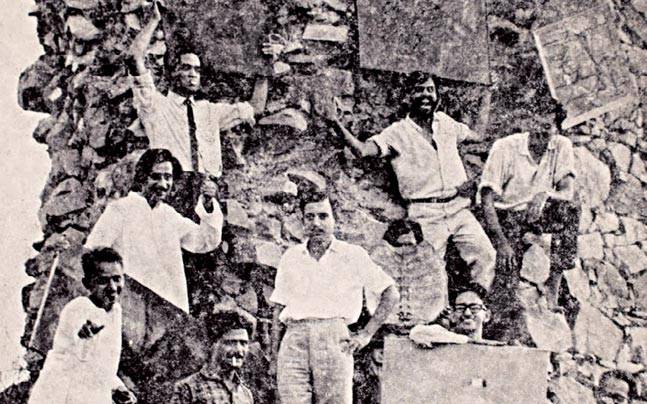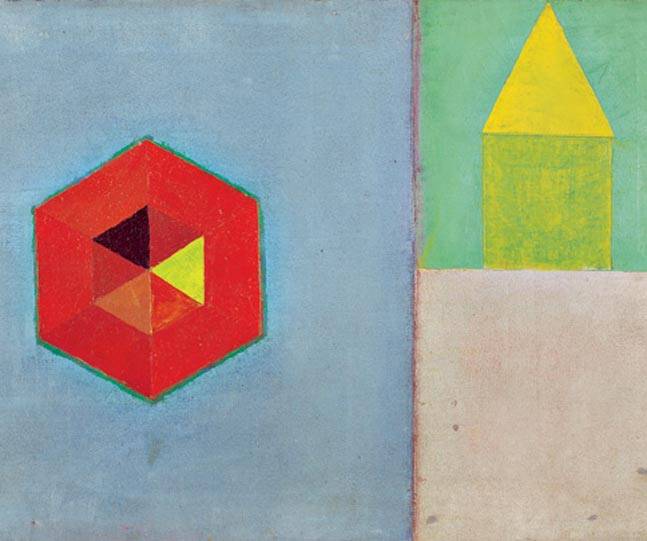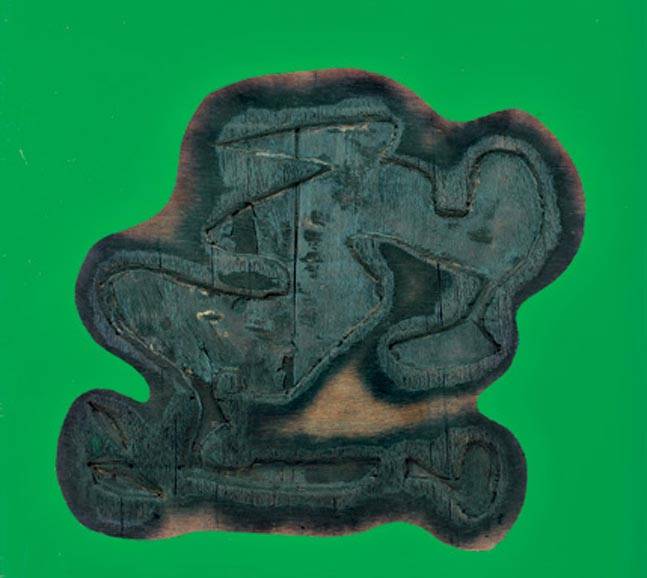Group 1890
This is a collection of articles archived for the excellence of their content. |
Group 1890
Shougat Dasgupta , A band apart “India Today” 8/9/2016
It happens everywhere art is made. Which is to say, it happens everywhere in the world. A group of artists band together and resolve to light a firecracker under the staid establishment. Somewhere along the way, a manifesto is written. And so it was that Group 1890 came to be formed in 1962 in Bhavnagar in Saurashtra, naming themselves after the house in which they had come together. The founding artists included Jagdish Swaminathan, commonly agreed to have been the intellectual impetus behind the group, Jeram Patel, Ghulam Mohammed Sheikh and Ambadas Khobragade. Modern Indian art, the group claimed in its manifesto, "by and large has been inhibited by the self-defeating purposiveness of its attempts at establishing an identity."
Offenders, in their view, included the celebrated Progressive Artists' Group (PAG), formed a decade-and-a-half earlier by such boldface names as S.H. Raza, M.F. Husain and F.N. Souza, for being too much in thrall to the West, and the revivalists of the earlier Bengal school for its sentimentalised 'Indian' aesthetic. Group 1890 sought a middle path, a homegrown modernism. "Something precious," wrote Octavio Paz, the poet and then Mexican ambassador to India, in his introductory essay in the catalogue to the group's first exhibition, "is being born with these artists." Paz was to grow close to Swaminathan, even writing a poem about him. "With a rag and a knife", the poem begins, "Against the idée fixe", offering us an image of both Swaminathan's radicalism, his desire to rip it up and start again, and his openness to new thought. By now comprising 12 artists from across the country, albeit with a strong Baroda-trained spine, Group 1890 organised a major exhibition in Delhi featuring about 10 paintings from each artist. It was opened by Jawaharlal Nehru.
Sheikh, a grey-haired eminence now, the man to turn to for a measured account of the group's formation and purpose, recalled in an interview that at the time, in 1963, Nehru "appeared to be a broken man after the war with China". He was reluctant to get involved. "Why me," Sheikh said Nehru asked, "and Swaminathan was quick to say, 'Sir, we have come to invite you as a writer'. He was very pleased." The group had been able to approach Nehru because of Swaminathan's political connections as a member of the Communist Party of India. With Nehru attending and Paz's endorsement in the catalogue, the Lalit Kala Akademi, where the show was held, was buzzing with curiosity about the new group, about the direction in which they seemed set to lead Indian art.
And then nothing happened. No further exhibitions were held. Several of the artists departed for Europe; Sheikh was already in London when the group made their debut. The whole was less than its considerable parts. Many of the original group of 12 went on to have substantial careers-not least Jeram Patel who some blamed for the group fizzling out-but as a movement, Group 1890 was stillborn. For most of the last 50 years, few would have known the group had even existed. Now, though, until December, the group's work is on show at DAG Modern in Hauz Khas Village. Group 1890 appears to have been a collective in name only, each artist grappling with questions of individual voice without reference to others in the group beyond their combined rejection of schools and movements that had gone before. But seen together, the works do have power, showing the breadth of thought and practice in the search for an 'authentic' Indian modernity.
Still, you're left grasping at straws a little bit, knowing that the artists involved were mostly established in their own right, came together as a group only to disband almost as soon as they had come together, their legacy restricted essentially to a single group show, however prominent. Very little has been recorded about the meeting in Bhavnagar. Sheikh, in the massive catalogue (too big to be described as a doorstopper), is quoted as saying it was a "meeting of mavericks", the discussion comprising "multiple monologues [rather] than a dialogue". It's almost as if the artists chose to have 'group' in their name as an ironic gesture. Since the group only lasted for the duration of a single show, almost no critical commentary exists of the artists as a group. And, as Paz wryly noted in his essay, the group's ideology is "the deliberate absence of any ideological meaning".The lack of information becomes comical. Vivan Sundaram, a young art student at the time, was loosely involved with the group, helping hang their works for the exhibition. Recalling the exhibition, he remarked, was like "constructing an image without images". As an essay in the DAG Modern catalogue reports, the Group 1890 catalogue "does not carry any of the images of the featured artworks. None of the works sold, but after [the exhibition] they were in storage, lost or sold over the years with few remembering what became of them". The most famous legacy is probably Patel's blowtorch on woodcut, but it is his rather than the group's, while Swaminathan, whose personality dominated the group at its outset, became more famous as an impresario, a 'discoverer' of Gond art, than he was as an artist.
Prayag Shukla, the art critic, in an interview to Shruti Parthasarathy in the DAG Modern catalogue, says that if "one were to go searching for the spirit, or concept, of Group 1890, you are more likely to find it in the four issues of Contra"; Swaminathan co-published the magazine with Paz. The magazine published cogent criticism of what a Sotheby's catalogue described as the "overarching influence of the École de Paris on the work of PAG". This, then, was the motive for forming Group 1890, to reject that European influence in favour of using, as Swaminathan did, tribal and folk symbols in a new, contemporary and urban way. The strength of Group 1890 is in its artists' critical sharpness but it was a flame that barely flickered before being quickly, unceremoniously, snuffed out.



